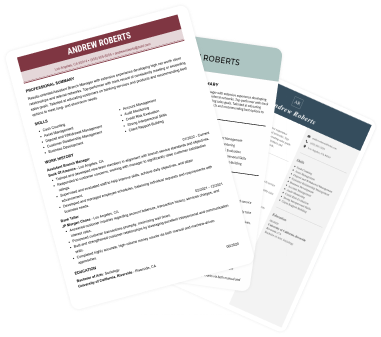Create a professional CV now!
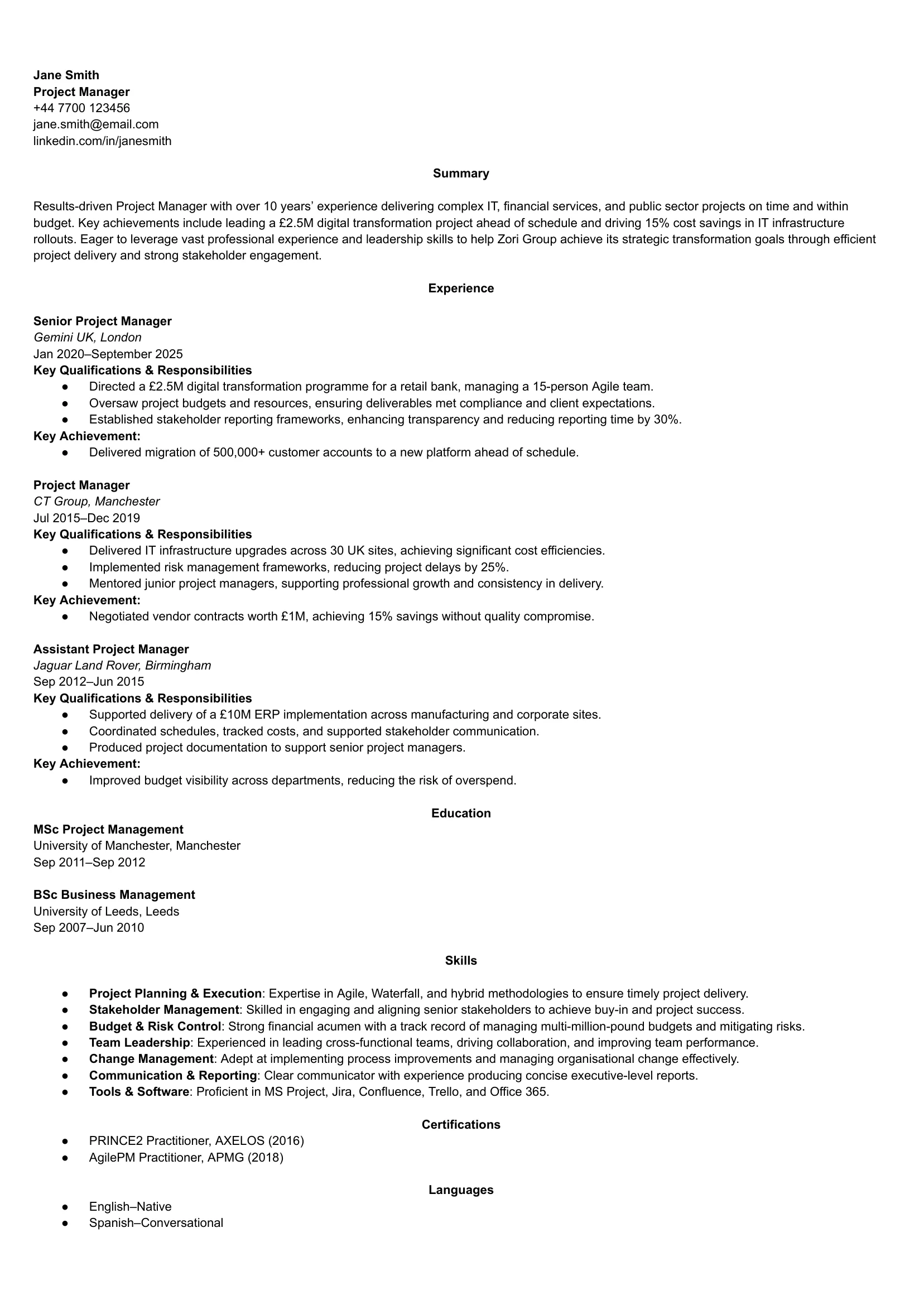 NO
NO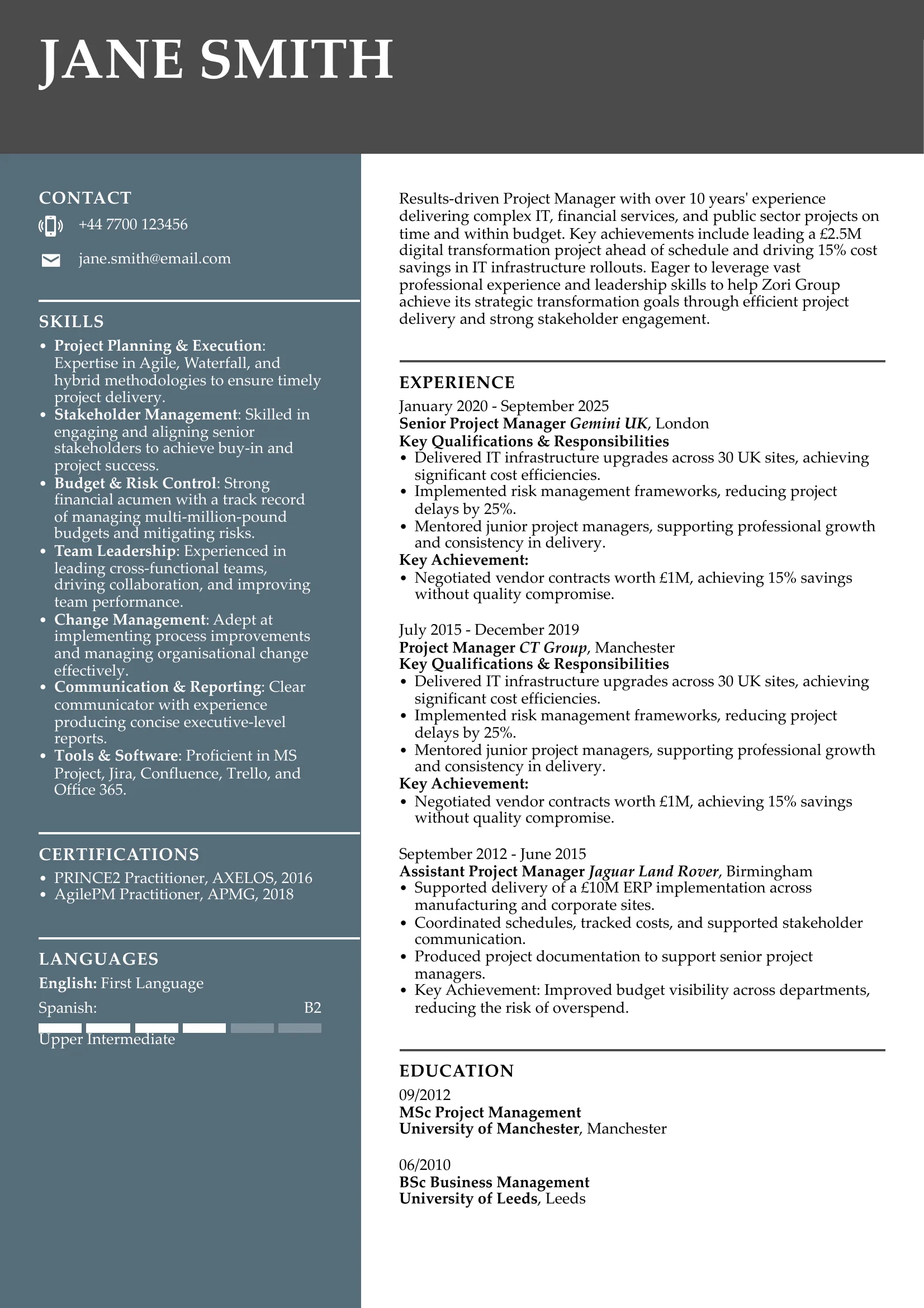 YES
YESLast updated on 13 November, 2025

AI is already reshaping the labour market in the UK: some roles are shrinking, others are growing. You must adapt to stay afloat. In this guide, I’m explaining what’s changing, which skills remain valuable in the changing work landscape, and outlining 15 career pivots you can try to protect
Create an effective CV in minutes. Choose a professional CV template and fill in every section of your CV in a flash using ready-made content and expert tips.
Create a professional CV now!
 NO
NO YES
YESWe created the sample on the right using our builder. See other good CV examples like this one.
Interested in other career advice articles? These may spark your interest:
The story you’ve probably heard is simple: AI will take jobs. The fuller truth? It’s more complicated.
Businesses paused recruitment for roles where AI can perform large chunks of the work, even before those productivity gains can be fully realised. That “anticipation effect” is visible in recent data: since May 2022, there has been a roughly 38% decline in high AI exposure job adverts; far greater than for lower-exposure roles. That doesn’t mean every job is doomed – it means some tasks will disappear, many roles will be re-shaped, and an array of new opportunities will open up.
The scale of change depends on the level of AI exposure in specific professions. Government analysis reveals high exposure to AI in professional jobs (e.g., management consultants, accountants, lawyers, and some teaching tasks), with finance & insurance being the most affected sectors. IPPR’s scenarios suggest that 11% oftasks are exposed to current-generation AI, rising to 59% with deeper integration. That means up to 8 million UK jobs could be at risk without proactive policy and employer action.
Globally, the World Economic Forum now projects that by 2030, about 170 million new jobs will be created and 92 million roles displaced: that’s a net increase of ~78 million jobs (new jobs ≈ 14% of today’s employment). Additionally, Goldman Sachs estimates that gen-AI could expose the equivalent of 300 million full-time jobs and ultimately automate around a quarter of labour tasks (in AI-exposed professions) in advanced economies.
There’s a common thread:
However, there are also winners: roles that blend AI literacy with human judgment are increasing wages and driving stronger productivity growth. PwC’s AI Jobs Barometer finds that salaries are growing twice as fast in sectors most exposed to AI compared to the least exposed ones (with the UK among the studied markets).
Translation: AI fluency + human judgement = higher wages
If you’re worried, here’s a practical, calm plan: understand where you stand on the risk map, lean into the uniquely human skills that AI struggles to replicate, and choose a pivot that aligns with your strengths and life constraints. Below, I explain the “human premium” of skills that stick and the most realistic pivots, with clear pathways into each.
AI excels at pattern recognition and speed; however, it struggles with nuance, context, and human relationships. In effect, the most resilient skills are:
Upskilling in these competencies – not just learning a tool, but also learning how to apply judgment and communication effectively around that tool – is the most straightforward route to resilience.
As of 2025, routine cognitive tasks are being automated, while roles that combine technical expertise with human judgment are on the rise. The goal isn’t to outrun AI, but to work with it.
Here are 15 UK career move ideas that combine upskilling and transferable strengths:
Automation is swallowing keystrokes and form‑filling. Your familiarity with datasets translates well to analysis and reporting. Upskill in Excel, SQL or Python, add a dashboard tool (Power BI), and focus on storytelling with data. You’ll deliver insights rather than inputs.
Scripted calls are easy to automate; trusted relationships are not. Move into customer success or consultative sales where you coach adoption, reduce churn, and surface opportunities. Leverage your persuasion skills, learn a CRM, and measure impact with clear KPIs.
Chatbots handle FAQs; humans tackle nuance. Pivot into technical support, onboarding or training for complex products. Deepen product knowledge, practise de‑escalation and documentation, and become the “last mile” problem‑solver.
Self‑checkout is rising, but retail brains are needed behind the scenes. Shift into inventory control, merchandising analytics or store systems rollout. Your shop-floor insight can improve stock accuracy and service, so learn warehouse and e-commerce tools to take the next step.
AI can proof and mock up; it can’t set direction. Move towards content strategy, SEO, or UX writing/research. Pair creativity with analytics, build a portfolio of campaigns or journeys, and use AI as a drafting assistant – you provide the judgement.
Legal tech speeds research and review. Reframe your precision and process skills into legal ops, e‑discovery, or compliance and data‑governance roles. Learn workflow tools, privacy basics and vendor management to become the human overseeing responsible AI use.
Transaction coding is increasingly automated. Strengthen forecasting, budgeting and stakeholder communication to pivot into management accounting or finance business partnering. Add modelling and data‑visualisation skills; advise, don’t just record.
A strong CV summary will convince the recruiter you’re the perfect candidate. Save time and choose a ready-made personal statement written by career experts and adjust it to your needs in the LiveCareer CV builder.
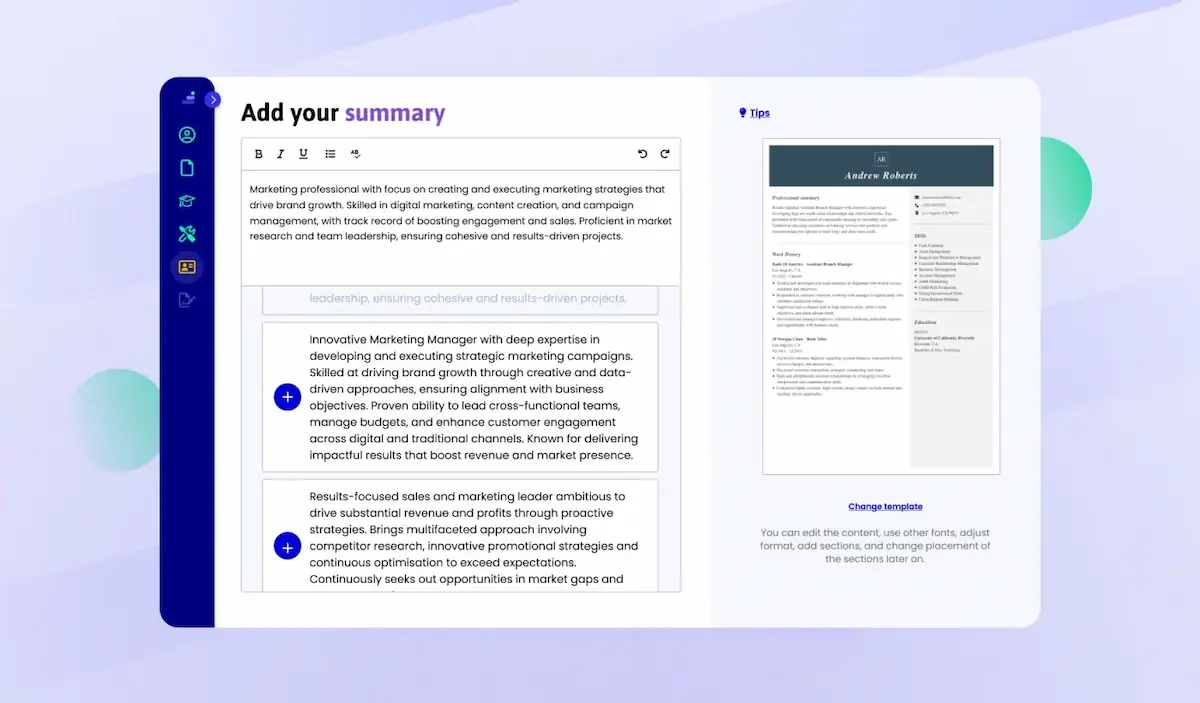
Kiosks take orders, not ownership. Use your operational know‑how to become a shift lead, assistant manager or quality/food‑safety champion. Train teams on new systems, optimise rotas and margins, and channel frontline experience into better service.
Robots lift; people orchestrate. Move into warehouse control, maintenance of automated kit, or supply‑chain analysis. Learn WMS/ERP basics and safety protocols; your floor experience helps you keep automation reliable and efficient.
Auto‑reports are easy, while actionable insight is rare. Grow into BI or strategy by focusing on the “so what?”: prioritisation, experimentation and stakeholder buy‑in. Build clear visuals, write concise exec summaries, and link metrics to decisions.
As tasks become automated, coordination, risk trade-offs, and motivation become increasingly important. Step into delivery roles (PRINCE2/Agile helpful) in your domain: tech, construction, healthcare, or the arts. Your domain fluency, combined with people skills, beats any bot.
Prefer to join the builders? Target analyst, ML‑ops, or automation engineer tracks in your industry. Start with Python and cloud fundamentals, version control, and a small portfolio (two or three realistic projects). Domain expertise is a powerful edge.
AI can tutor, but it can’t mentor. Convert experience into FE/HE teaching, vocational instruction, or corporate L&D. Gain a relevant teaching or assessing qualification and assemble case‑study‑led materials that prove you can develop others.
Care is human, relational, and in demand. Consider nursing, AHP roles, mental health support, or social care. Explore accelerated routes for graduates or apprenticeships for career changers; your empathy, judgment, and resilience are centre stage.
On‑site, variable work remains hard to automate. Electricians, plumbers, carpenters and EV/solar installers are in short supply. Enter via apprenticeships or fast‑track training; you’ll marry hands‑on skill with new green technologies.
Quick, practical, and action-focused: this six-step plan shows how to move from where you are today into roles that resist automation and reward AI literacy. Each step is designed to be implementable in weeks-to-months (or longer where noted), so you can start shifting your CV, skills, and network immediately:
The data shows change is real and uneven. Firms are already reworking hiring plans for AI-exposed roles, creating urgency for those at career entry points or in routine cognitive roles. At the same time, policy choices, employer strategies, and individual action can shape outcomes: AI can augment rather than replace work if people and institutions make deliberate choices.
If you’re ready to act: start with a one-page skills audit, pick a pivot cluster that aligns with one or two of your strongest transferable skills, and map a 6- or 12-month learning plan that ends with a portfolio piece. The most crucial pivot is one of mindset: treat learning as continuous, use AI as a multiplier, and aim to redeploy your uniquely human strengths where they’re most valued.
If you’re seeking more career tips, check these guides:
You don’t have to be a CV writing expert. In the LiveCareer CV builder you’ll find ready-made content for every industry and position, which you can then add with a single click.
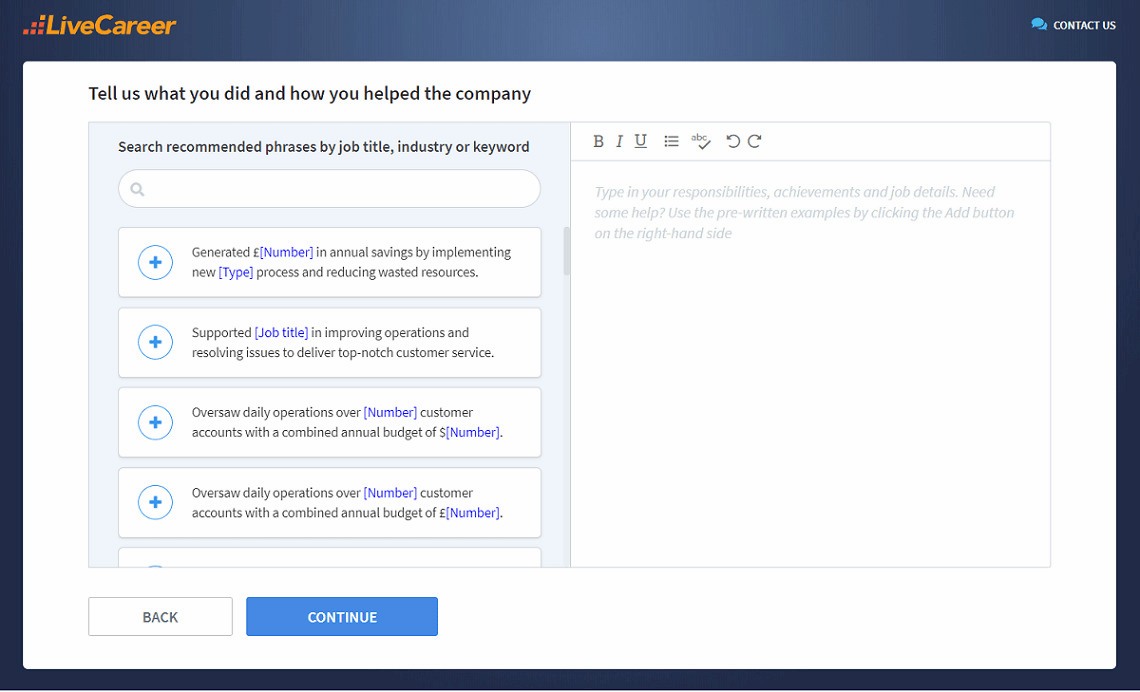
Thank you for reading my article. If you’re interested in shaping your career the smart way in the ever-changing job market, feel free to read other articles on our blog. I wish you the best of luck and success!
Our editorial team has reviewed this article for compliance with LiveCareer’s editorial guidelines. It’s to ensure that our expert advice and recommendations are consistent across all our career guides and align with current CV and cover letter writing standards and trends. We’re trusted by over 10 million job seekers, supporting them on their way to finding their dream job. Each article is preceded by research and scrutiny to ensure our content responds to current market trends and demand.
Category: Career Advice
Crafting a job-winning CV is all about showcasing your unique skills and experiences. Start with a strong personal statement that highlights your career goals and achievements.
Try Our CV Builder Now